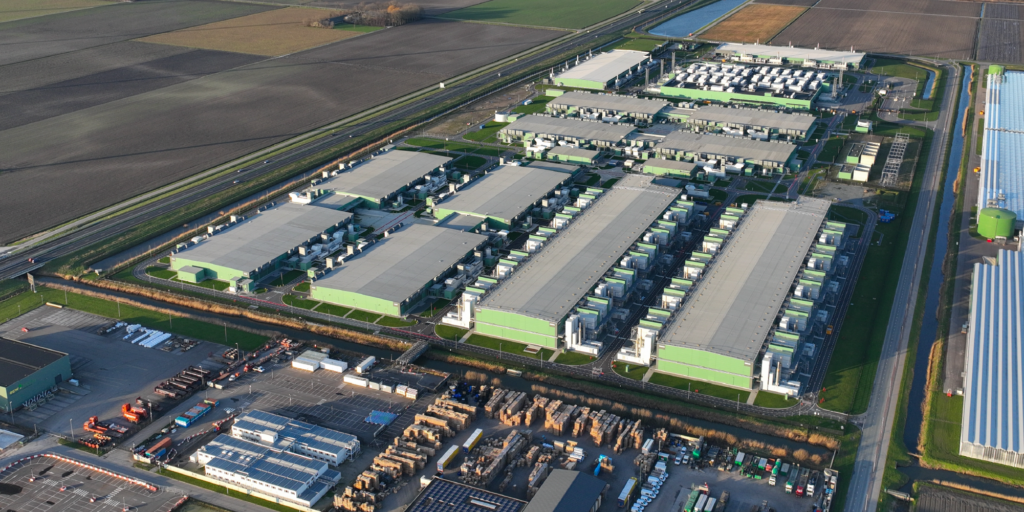— 9 min read
Cash Flow Forecasting in Construction: How to Stay Ahead of Funding Gaps and Protect Project Performance
Last Updated Apr 16, 2025
Last Updated Apr 16, 2025

Cash shortfalls are a leading cause of stalled projects, unpaid contractors, and budget blowouts in construction. Without a clear forecast of how cash will flow in and out over time, financial decisions become reactive, and project risk increases.
Reliable forecasting brings structure to financial planning, enabling teams to align capital with project needs and respond quickly to change. And today, many teams are moving beyond spreadsheets—leveraging connected digital platforms that bring budgets, schedules, contracts, and progress updates into one place. This shift allows for faster updates, greater accuracy, and better collaboration across departments.
In this article, we’ll walk you through how to build an effective cash flow projection report and share proven strategies—including how technology can support real-time forecasting—to ensure your forecasts stay accurate throughout the project lifecycle.
Table of contents
What is Cash Flow Forecasting In Construction?
Pro Tip
Today, many teams use integrated construction platforms to streamline the forecasting process. These systems connect budgets, schedules, progress updates, and contract data in one place—making it easier to build accurate projections, identify potential shortfalls early, and collaborate across departments. By replacing disconnected spreadsheets and siloed data with a shared, real-time view of project finances, platform technology supports more confident decision-making and better financial control.
Cash flow forecasting in construction is the process of predicting when money will enter and leave a project—giving teams a time-based map of future financial activity. It provides a timeline-based projection of expected cash inflows—such as milestone payments from the client—and outflows, including labour, materials, equipment hire, and compliance costs.
These forecasts are typically developed during the preconstruction phase and updated regularly as the project progresses. They give project teams a forward-looking view of financial activity, helping to ensure that adequate funds will be available to meet obligations at every stage.
Why Cash Flow Forecasting Matters
Accurate forecasting gives teams confidence that funds will be available when needed—avoiding the funding gaps that cause delays, missed milestones, and budget blowouts.
When cash flow is misjudged, projects face serious risks:
- Underestimating cash needs can lead to unpaid suppliers or subcontractors, work stoppages, and reputational damage.
- Overestimating cash flow can cause teams to borrow unnecessarily, incurring higher interest costs or indicating project delays if work isn’t progressing as scheduled.
Unlike many other industries, cash movement in construction is often irregular. Inflows usually depend on achieving project milestones, while outflows may spike unpredictably depending on procurement schedules, delivery methods, and scope changes.
A strong cash flow forecasting process helps construction businesses anticipate these timing mismatches and avoid funding shortfalls. With insolvencies on the rise across Australia’s construction sector, accurate forecasting is more important than ever for maintaining project and business stability.
The Cash Flow Cycle
Cash flow in construction is inherently cyclical, following the broader stages of a project’s lifecycle. Outflows tend to be front-loaded, while inflows are usually tied to milestone achievements or contractual progress payments. While every project is unique, most follow a similar financial rhythm—with predictable peaks and troughs that construction teams must plan around. Understanding of each stage’s pressures helps teams manage financial risk more proactively.
1. Initial Phase
In the early (or predevelopment) stage, projects often begin in a cash deficit. Payments from clients or financiers usually haven’t commenced, yet teams must already cover costs like:
- Planning and feasibility studies
- Design and engineering
- Permits and approvals
- Initial procurement and mobilisation
These early outflows may be moderate compared to later stages, but they place immediate pressure on working capital. If funding release is delayed or if the scope shifts, this pressure can intensify. That’s why a strong financial foundation—underpinned by accurate forecasting—is essential before construction ramps up.
2. Active Construction Phase
Active construction is the most cash-intensive phase of the project. Outflows ramp up rapidly as teams bring in labour, order materials and equipment, and manage day-to-day operations on site. While milestone payments often begin during this stage, they typically don’t keep pace with spending.
Progress payments from the client may start to come in, but they often trail behind actual spending. Volatile material prices, supply chain issues, weather disruptions, or workforce shortages (a current challenge across Australia) can all strain cash flow and delay milestone-linked payments.
At this point, frequent cash flow updates are vital. Forecasts must reflect the real-time pace of work, allowing teams to anticipate funding gaps and avoid reactive borrowing or missed obligations.
3. Construction Closeout Phase
As major works wrap up, cash outflows begin to taper off. Spending at this stage mostly covers final materials, labour, and outstanding accounts for purchases made on credit.
Fewer resources are required, but key financial risks remain:
- Final inspections, which may hold up payment release until compliance is confirmed
- Unresolved change orders
- Defect list rectification and fixes, Retention payments, which are often withheld until months after completion
Careful coordination during closeout can help avoid unnecessary delays in revenue collection or finalising accounts.
4. Post-Construction Phase
Cash activity is minimal after handover, but the project’s financial health still requires attention. Remaining outflows are minor and usually related to final paperwork, account reconciliation, or post-completion adjustments. A few final roadblocks can still impact cash position, such as:
- Account reconciliation and financial reporting
- Final warranty work or adjustments
- Release of retention funds
- Disputed or delayed claims
Delays in these areas can affect working capital and restrict a company’s ability to take on new projects. While smaller in scale, this final phase still requires follow-through to close out financials cleanly.
Why Understanding the Cycle Matters
In Australia’s high-risk construction landscape, poor cash flow management is one of the leading causes of insolvency. By understanding and anticipating the natural rhythm of cash inflows and outflows, construction businesses can:
- Avoid overextending their resources
- Time funding requests or drawdowns more strategically
- Maintain smoother operations throughout the project lifecycle
A robust cash flow forecasting process—grounded in this cycle—equips teams to navigate uncertainty, protect profit margins, and deliver projects with confidence.
How to Forecast Cash Flow in Construction
Cash flow forecasting in Australia combines budget data, project scheduling, and contracted payment terms to map when money will flow in and out of a project.
1. Know your total project budget
Before you can map any cash movements, you need a clear view of the total project budget. This includes:
- Direct costs (labour, materials, plant, subcontractors)
- Indirect costs (project management, site setup, permits, insurance)
- Contingency funds and allowances
- Any known or anticipated variations
This budget forms the foundation of your cash flow forecast. You'll use it to map out when money will be spent and match those timings against incoming payments.
2. Establish expected cash inflows
Identify when cash is expected to enter the project. This is often outlined in the contract and tied to:
- Project milestones
- Progress claims
- Predefined intervals (e.g. monthly claims)
Some payment dates will be fixed, while others are estimates based on the construction schedule. Use the schedule to anchor your estimates as accurately as possible.
These inflows determine when you’ll have cash on hand to cover project expenses.
3. Estimate cash outflows
Now turn to the outgoing side of the forecast. Review your budget and break it into major cost categories (labour, materials, plant, etc.). Add these to your spreadsheet, giving you a total cost per category.
But totals alone aren’t enough—you also need to forecast when these costs will be incurred. Construction spending is rarely linear. For example, procurement and site establishment often happen early, while internal fit-out may come later.
To reflect these patterns, you’ll use cash flow curves.
4. Choose and apply the right cash flow curve
Cash flow curves help distribute your budget across the project timeline in a way that mirrors real-world spending.
Pro Tip
Use historical data from similar projects where possible. It helps ensure your forecast reflects how work unfolds in practice—not just assumptions.
Apply the selected curve to each budget line, transforming static costs into a time-based forecast.
Common curve types include:
- S-curve: Slow start, fast middle, slow finish—ideal for labour or overall project spend.
- Bell curve: Quick ramp-up and decline—used for short, intensive work.
- Front-loaded: High early spend—typical for materials and mobilisation.
- Back-loaded: Costs peak near the end—fits internal works or long-lead items.
- Linear: Even spread—suits consistent costs like project management.
5. Analyse and highlight trouble spots
Once inflows and outflows are mapped, scan for periods where outgoings exceed incomings—these pressure points can create financial strain. Common triggers include delayed claims, upfront costs, or overlapping subcontractor payments.
- Check for timing gaps, like paying suppliers before receiving funds. Look out for irregular spikes—break them down or spread them out to reduce risk.
- Platform tools can flag these issues early, syncing budgets, contracts, and claims in real time. Dashboards and visual reports help teams spot variances and act fast.
- Build in buffers and test “what-if” scenarios so you’re ready for surprises. Use the forecast as a live, shared tool to guide smarter, faster decisions.
Cash Flow Forecasting Best Practices
Accurate cash flow forecasting isn’t just about tracking income and expenses—it’s about enabling confident financial decision-making throughout the project lifecycle. These best practices will help you strengthen your forecasting process and protect project performance.
Build a payment schedule that mirrors the SOV.
Create a payment schedule that mirrors the schedule of values in your contract. Link each forecasted inflow to a defined milestone, progress claim, or interval-based drawdown. This keeps your forecast grounded in real earned value and prevents arbitrary projections.
As the project evolves, update the payment schedule alongside any contract changes to keep your forecast accurate and aligned with delivery.Plan for delays and disruptions
Construction projects rarely unfold exactly as planned. Weather events, delayed materials, or slow design approvals can shift timelines and impact both cash inflows and outflows.
To stay resilient, build buffers into your forecast—especially during risk-prone phases. If a key payment or milestone is delayed, your cash flow model should already show how that impact can be absorbed, whether through short-term funding, renegotiated payment terms, or phased delivery strategies.Track variance and course-correct quickly
A forecast only adds value if it’s checked regularly against reality. Review your forecasted cash flow against actual inflows and outflows at set intervals—monthly or even fortnightly, depending on the project’s pace. Track missed payments, cost overruns, or unexpected changes. Then investigate the causes, flag them with your team, and adjust your forecast accordingly.
Fast feedback loops help you catch emerging issues early and respond before they snowball into bigger financial risks.Use connected tools for better accuracy
Manual spreadsheets have their limits. Modern forecasting platforms can integrate with your accounting, contract, and project management systems to pull in real-time data.
This ensures your forecasts stay up to date with minimal manual effort, while also providing stakeholders with a live view of financial health. These tools improve accuracy, enable faster reporting, and make it easier to collaborate across teams.
Master financial control with cash flow forecasting.
Reliable cash flow forecasting turns construction finance from reactive into proactive strategy. With real-time visibility over financial activity, teams can handle uncertainty with confidence, maintain momentum, and protect profitability.
Categories:
Tags:
Written by
Josh Krissansen
Josh Krissansen is a freelance writer with two years of experience contributing to Procore's educational library. He specialises in transforming complex construction concepts into clear, actionable insights for professionals in the industry.
View profileExplore more helpful resources

Construction Handover: The Keys to a Smooth and Successful Transition
Project handover should be a seamless transition, but its success is determined long before the last walkthrough. When teams consistently align on design, timelines, and quality, and support that alignment...

Cutting Delays and Costs: Proven Ways to Boost Construction Site Efficiency
On-site efficiency separates profitable construction projects from those plagued by delays and budget overruns. In Australia’s construction landscape—where supply chain disruptions, skilled labour shortages, and increasingly strict regulations are the...

Why Communication is the Hidden Risk Factor in Construction
Construction is a high-risk industry—not just financially, but physically and reputationally. While significant effort goes into mitigating physical hazards, ensuring financial control, and protecting contractual interests, one of the biggest...

Data Centre Construction: Building the Cloud
As the demand for digital data increases, so does the demand for the physical structures and equipment needed to store and process data. Data centres are facilities that house computer systems...